Principles Of Design: Part 2
More principles that will help you with designing your own garden.
See Principles Of Design: Part 1 for more information.
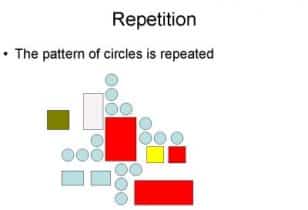
Repetition:
Repetition is the technique of using element, size, form or texture throughout a garden design composition. It provides a common tie or visual link among the various parts.
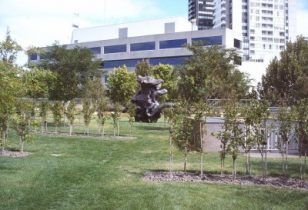
The repeated use of the Camellia hedges at the Art Center in Melbourne creates repetition throughout the garden.
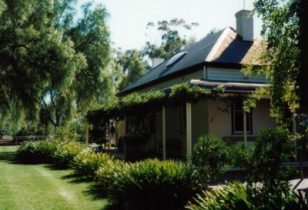
The repetitive use of the Agapanthus in front of the house helps to also create unity.
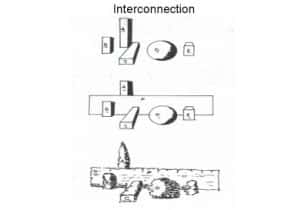
Interconnection:
Interconnection is a technique for producing unity by physically linking various elements of the composition together. In this diagram element F has been introduced to join the individual elements in a formal way, while the next slide shows informal interconnection in landscape gardening.
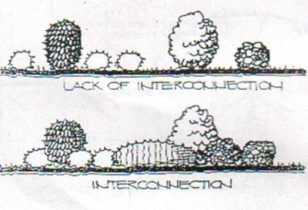
Joining elements makes a more pleasing composition. The eye seems to travel more easily rather than stopping on each individual shrub.
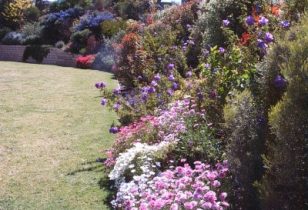
By connecting plants, you create a more cohesive composition. The eye takes the scene in as a whole, rather than having the plants compete individually for your attention.
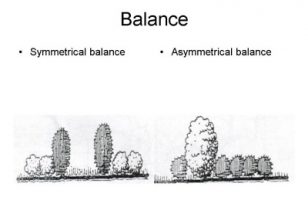
Balance:
Balance is the equalisation of visual weight from one part of the composition to another. Size, colour and quantity of elements are major considerations when providing balance. There are two types of balance: symmetrical and asymmetrical.
Symmetrical balance is the repetition of elements from one side of the composition to the other. This is most appropriate with formal designs.
Asymmetrical balance is created by implying equal visual weights on either side of the composition without actual repetition. This style of design is most compatible with informal designs.
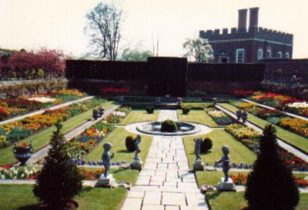
This picture of a garden in Hampton Court shows a formal, symmetrically-balanced layout. However, the large mix of colours of the plants takes away from the feeling of balance. I call this “Chocolate box” gardening because it reminds me of the old chocolate box designs with masses of random and clashing flowers.
.
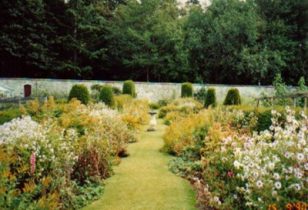
This herbaceous border shows balance, but in a more muted, and I feel pleasing, way than the previous picture.
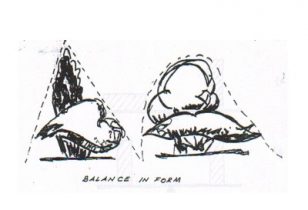
The triangle is one of the most stable of forms and has natural balance. That is why creating planting with width, as well as height, provides strong visual balance.
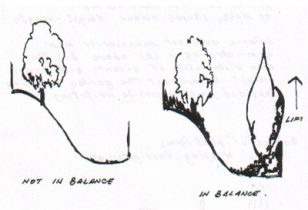
The plant added to the bottom of the bank provides a visual balance to the composition.
The slope in this picture can also be used to deliberately create an emotional reaction from lack of balance – think about the way it makes you feel when you are at the base of a cliff looking up!
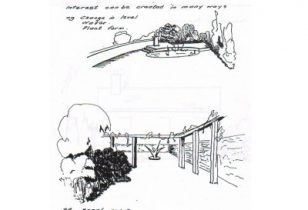
Interest:
There are many ways that you can create interest in your garden.The illustration at the top shows how you can create a change of level (this is also useful because it provides somewhere to put the fill from digging the pond out!) as well as hinting there might be more around the corner, which encourages exploration. Focal points, as in the drawing at the bottom, helps to lead the eye around the garden.
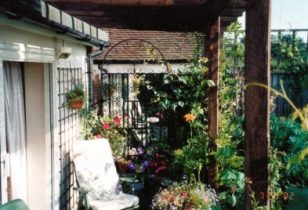
This verandah area looks like it stretches quite a way, but in fact there is a mirror placed behind the wrought iron gate. This makes the area look larger than it is. But if you do use mirrors, please try to place something in front of them (like the gate) to discourage birds from flying into them!
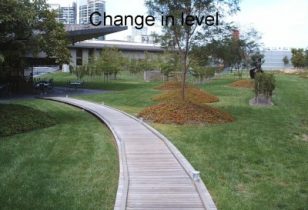
Changes in levels, even if quite small, can create interest.
This raised path creates a different level from the lawn and encourages people to walk on it rather than the lawn, creating less wear and subsequent maintenance.
The raised mounds with trees planted on them also perform two purposes, a different level as well as providing drainage. This is something that you could consider with lemon trees on clay ground.
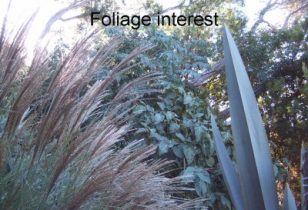
Often when buying plants from nurseries, people get taken in by spectacular flowers and then try to find a spot to put them. I call this “Plonking”.
Just plonking plants in very rarely produces a pleasing or harmonious composition. Try to consider the foliage of each plant too to provide interest.
The miscanthus grass next to the flax with the Tamarillo in the background gives variety and interest.
.
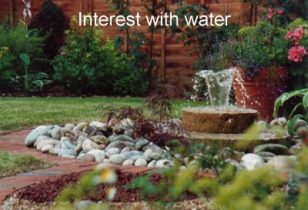
Water always provides atmosphere and another dimension, the sound is soothing, and the movement of water always provides visual interest.
This water feature has been created as child-safe as the water reservoir is under the pebbles and inaccessible to children.
.
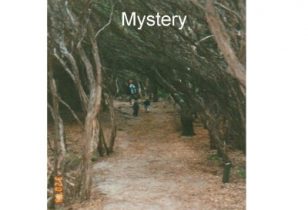
Try not to have everything in your garden visible at once, a little mystery encourages exploration, that is why I like to incorporate seating areas and paths through garden beds, to create a change of atmosphere, even in a small garden, as well as encourage exploration and thus a deeper experience of the garden. This path is through Tea-tree woodland and the overhanging branches create a feeling of mystery and adventure.

Gardens should be of interest to all ages. The sense of exploration is very important to children, so give them plenty of little areas to explore and experience.
This sculpture of animals playing Mah-Yong acted like a magnet to the children and they talked about it for weeks afterwards. Gardens can and should be places of magic and excitement and the things we can do for children are only limited by our own imagination.
.
